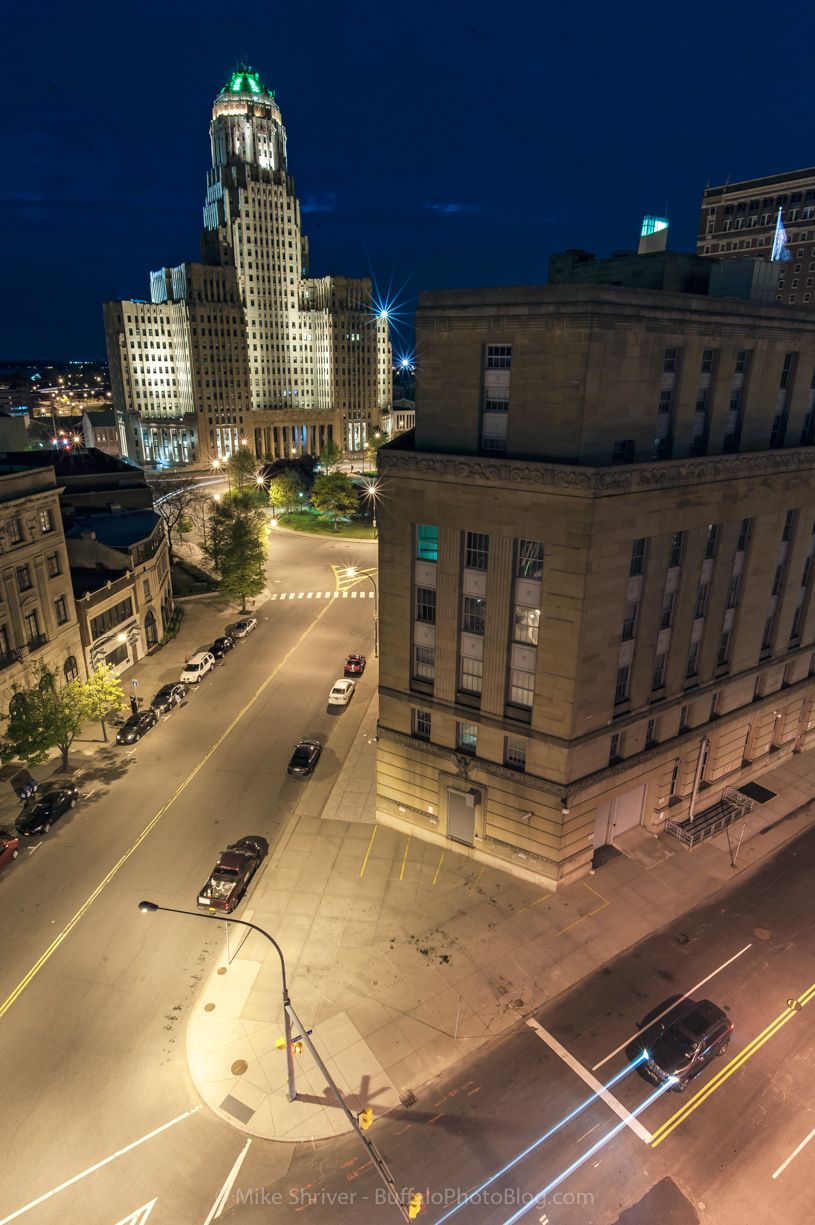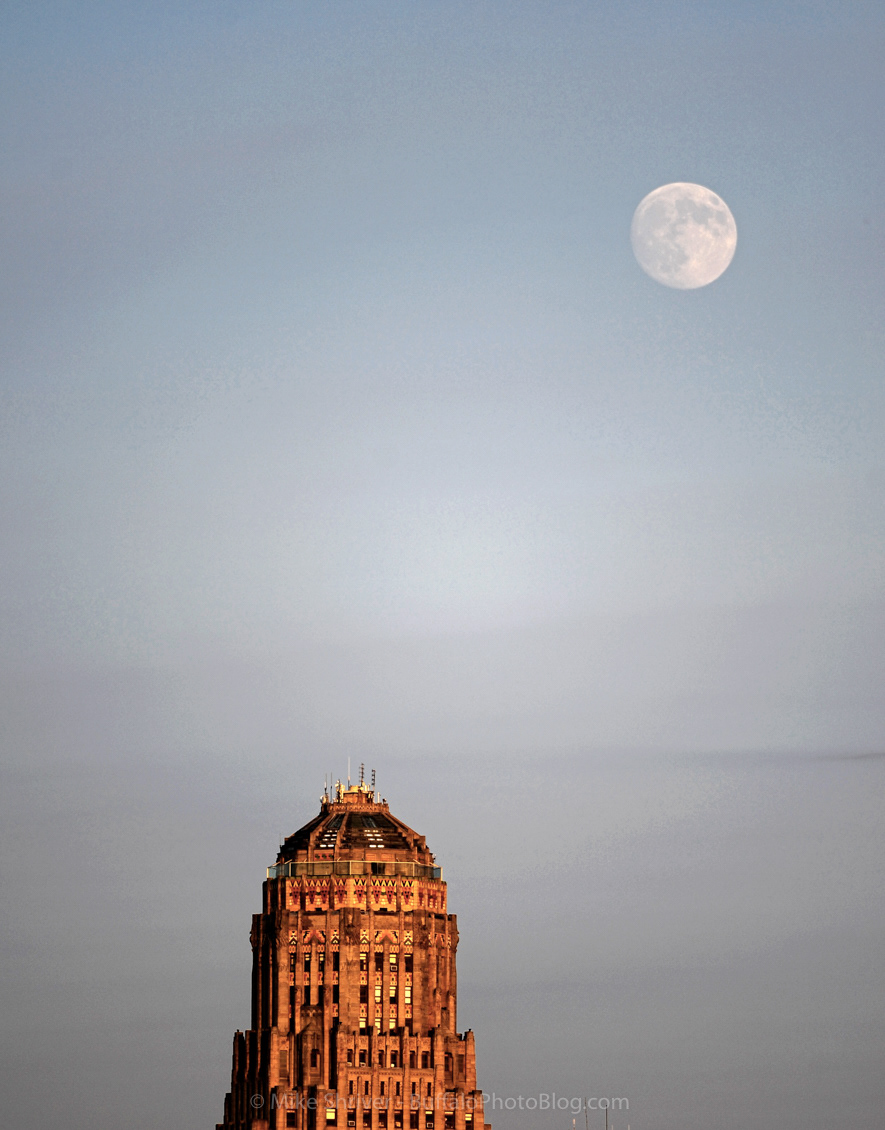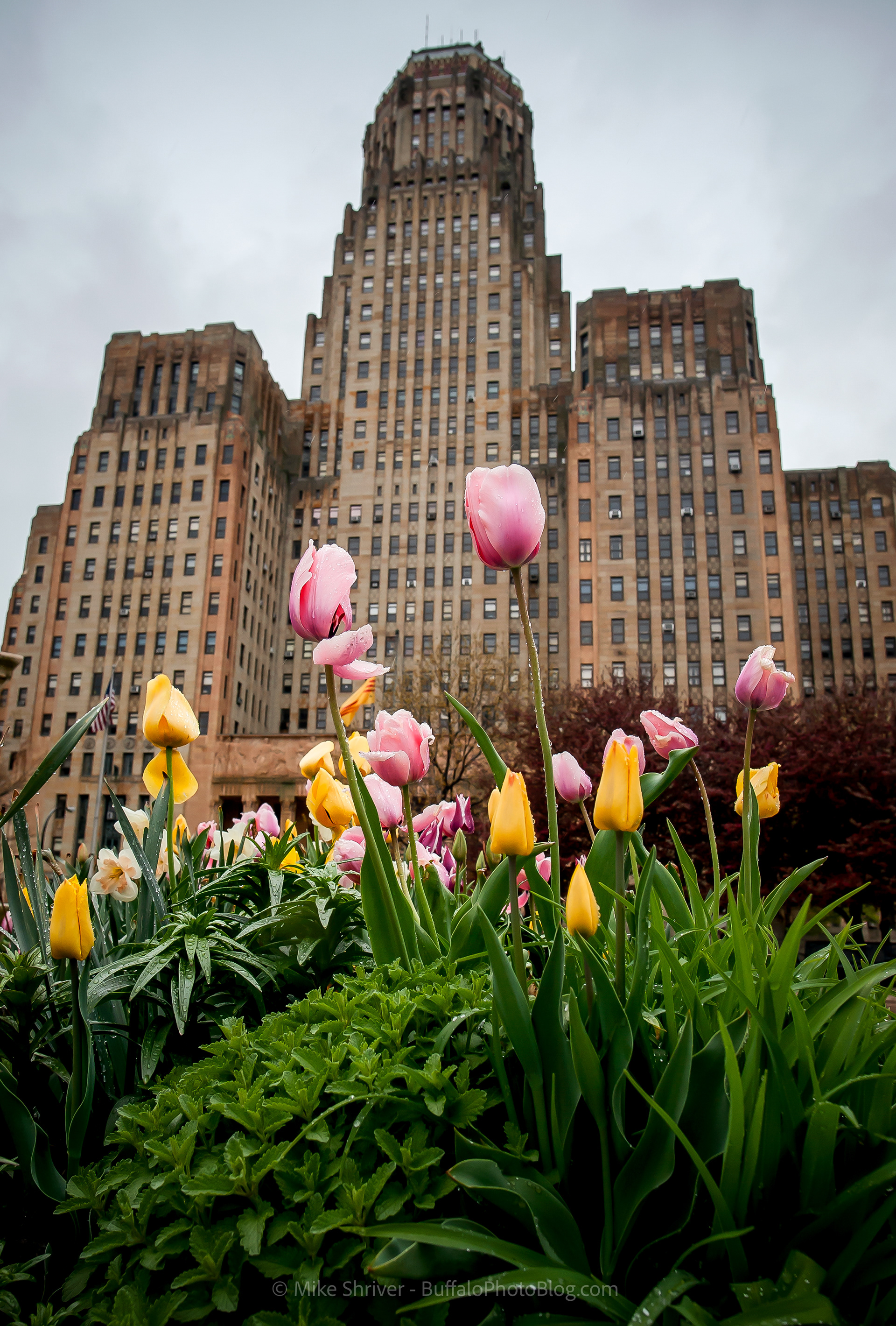Buffalo City Hall
Buffalo City Hall, one of Buffalo's most iconic buildings, stands tall amongst Buffalo's unique skyline. Designed by architects John Wade and George Dietel, the 32 story Art Deco masterpiece was completed in 1931 and was dedicated on July 1st, 1932 for Buffalo's centennial anniversary of being a city. Built by the John W. Cowper Company, Buffalo City Hall quickly became one of the most expensive builds in the country at the time with $6.8M in total costs (or $95M in today's money) and was the city's tallest building at 378' in height until 1 Seneca Tower was built in 1970.
Art deco was an extremely popular design in the 1920's and 1930's with the Chrysler Building and Rockefeller Center in New York also boasting similar designs from that era. Due to evolving building codes and zoning laws, Buffalo City Hall took on a unique design. No longer could tall buildings rise to their full height in one sheer swoop (see 1 Seneca Tower 40 years later). Instead, to admit light and air to the street below, the facade had to be set back as the building rose.
Lively ornamentation, in geometric patterns, was applied to both the interior and exterior. Inspirational paintings and sculptures tell the stories of the wonders and promise of the machine age. Prominent ornamentation decorates the hallways and entrances of the building. Near the top the building are V-shaped chevrons of polychrome terra cotta. Directly below these are bands of terra cotta with American Indian motifs; the band is interrupted at the corners by large stone eagles. Ground-level colonnade and frieze hit you with an immediate "wow" as you approach the building, exemplifying great detail and story-telling figures. A must see for visitors is the observation deck on the 28th floor (or about 360 feet up), offering incredible panoramic views of downtown Buffalo and quite a bit of history on dedicated plaques and murals in the surrounding area. On a clear day, you can see the mist from Niagara Falls and 50+ miles in any direction.
Throughout the lobby lay breathtaking murals and sculptures, such as the William de Leftwich Dodge mural on the east side of the main entrance hall (pictured in the gallery below). Thousands of terra-cotta tiles fill the lobby and hallways, once inspired by the headdresses of certain Indian chiefs. One must also see the magnificent skylight in the Common Council Chambers on the 13th floor, filling the room of tons of natural light!
Outside rests two prominent statues dedicated to former Presidents Grover Cleveland (found on the north side) and Millard Fillmore (found on the south side), done by New York sculptor Bryant Baker. The block on which Cleveland stands bears the phrase "I have tried so hard to do right." Cleveland was mayor of Buffalo in 1882, Sheriff of Erie County, Governor of New York, and the 22nd and 24th president of the United States. In the center of Niagara Square (which is really a circle) lays the McKinley Monument. The memorial, erected in 1907, is dedicated to former President William McKinley who was assassinated while attending the Pan-American Exposition in Buffalo in 1901.
OK - I outlined the basics for you. I recommend you still take a few hours and visit for yourself since I talk on just a small portion of what the building has to offer - there's a lot I'm missing! To conclude, here's a few fun facts that are completely pointless to know but fun to call out nonetheless:
- There are 1,520 windows in Buffalo City Hall
- There are over 5,400 light switches and over 5,000 electric outlets in the building
- There are still 21 motor-driven ventilation fans in operation today
- There's 110 miles of copper wire intact inside
- 143 clocks operating off of a master clock
- 375 telephones with a master switchboard
I hope you enjoyed this short writeup. Click on each image below for a larger view!





